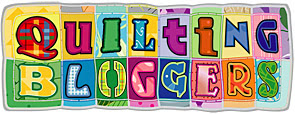Modern quilting is less defined by strict rules and is better understood by its general characteristics. The word modern, as generally applied to art, architecture, and music refers to a piece that “reject(s) traditionally accepted or sanctioned forms and emphasize(s) individual experimentation and sensibility.” The modern style is nothing new. Modern quilting begins with the same goal as traditional quilting in mind, a finished quilt, but challenges the ideas and manifests them in a new way. It’s a re-interpretation and often slimmed down approach to doing something that has already been done.
This reinterpreting of ideas can be seen in other mediums, such as art and architecture. For example, Piet Mondrian participated in the De Stijl art movement (a style classified within the modern art category) in which he painted using only black, white, and primary colors in vertical or horizontal forms. Artists who partook in the De Stijl movement “sought to express a new utopian ideal of spiritual harmony and order.” Ludwig Mies van der Rohe’s work is a prime example of modern architecture. He practiced what he called “skin and bones” architecture in which he exposed essential parts of the building, like columns, as opposed to hiding them behind the walls like more traditional architects.
The “skin and bones” approach reappears in many of the quilts found within the modern quilting movement. When conducting and online image search of “modern quilts,” one would find infinite basic forms, often with a minimalistic approach. Frequently, the examples found use a bold contemporary print highlighted through the use of solid fabrics and loads of negative space.
Modern quilting is an approach to quilting in today’s world. Most modern quilters are familiar with and often use traditional techniques. Some, however, choose to re-interpret the “rules” and follow their own paths. A few rule change examples include:
- Improvised quilting often directly disregards perfectly square corners and regularity.
- The use of traditional quilt blocks transformed into something new. Lots of these new variations are reached through improvised piecing and lead to the “wonky” aesthetic.
- Non-uniform scale of quilt blocks to exaggerate specific portions or drastically reduced to minimize them.
The only un-breakable rule in today’s quilting seems to be the necessity of three layers: quilt top, backing, and batting. These modern modifications have lead to a number of block designs that are used often by today’s quilters.
The traditional log cabin block has been translated into the modern quilt language in two forms: the wonky log cabin and the square-in-a-square. The square-in-a-square block varies the size of each ring and often strays from the “red square in the middle” found in traditional log cabins. The wonky log cabin is created when a quilter forgoes the rigidity of the traditional log cabin and instead chooses to skew the logs at his or her will. Often times this central square in both of these blocks is enlarged and features fabric that is fussy cut to show off a certain part of the print.
A modern block that has stemmed from the traditional eight-point star is the wonky star. The majority of this block is usually rigid in structure, but the wonkiness comes into play in the points of the stars. These are improvised in construction to evoke playfulness and fun.
Although there are modern quilt blocks, not all modern quilts are created using the traditional method of building separate blocks and joining them into a finished quilt top. Sometimes quilters skip over the use of these blocks and decide to create quilts in strips or rounds instead. There is a trend lately in creating quilts made from strips of fabric sewn together to appear as stripes. Sometimes the focus of the quilt is on the lack of a theme or design and letting the colors or fabrics speak for themselves, similar to the way Josef Albers concentrated on the colors in this paintings and was unconcerned with a defined subject matter.
In the past, most quilters generally came to quilting through the teachings of an elder. While this still holds true, some are finding it on their own. The online community has exploded and new quilters are able to develop their skills with online tutorials instead of in person. There are online forums, virtual bees, and swaps available on flickr, an online photo storage and sharing site. The blogosphere offers and abundance of free information and tutorials. Etsy offers an online marketplace for crafters of all kinds to connect and sell their products. Of course, modern quilters are not only connected digitally. One of the latest quilting phenomenans is the Modern Quilt Guild. In October 2009, the founding branch of The Modern Quilt Guild started in Los Angeles. The Modern Quilt Guild has grown to accommodate more than 100 modern quilt guilds in cities across the world.
Modern Quilting is many things. It is not solely for the young or the old. It is an approach used by quilters wanting a new twist to the age old tradition. It is a style of simple aesthetics and personal taste that allows the quilters to freely express themselves.









1 comment:
Well written, Jessica!
Post a Comment